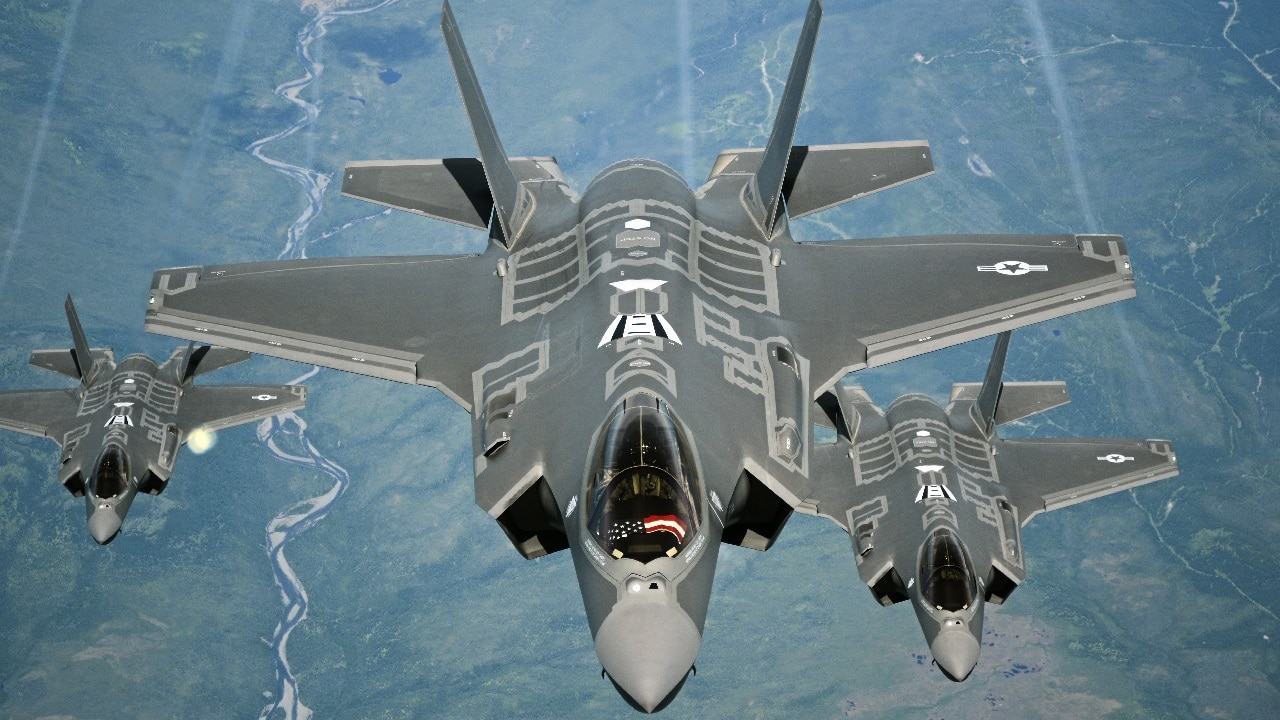Well, here is something you don’t see every day: two symbols of American economic and military power in the same video frame.
And that is literally what I walked into today, as I just got back from Walt Disney World in Orlando Florida, having witnessed an F-35 flyover, going right over Cinderella’s Castle at the Magic Kingdom.
F-35 Stealth Fighters over Disney World
It was something to see, that is for sure.
There were two separate flyovers.
The first was a group of F-35s flying with a refueling tanker. Then, maybe five minutes later, a second group of four F-35 fighters flew right over.
The second group of fighters was amazing in that you could hear the engines roar and feel a little of their power as they passed overhead.
Crowds were patiently waiting for the jets to pass over, with easily at least a thousand people waiting for nearly thirty minutes or more on the main street for the event in the sky.
The crowd never thinned out, even at over ninety degrees in the hot Florida sun.
More About the F-35
As one 19FortyFive author explained just recently:
The F-35 is a truly multi-role aircraft that specializes in six different missions sets (Strategic Attack, Close Air Support, Air Superiority, Electronic Warfare, Intelligence, Surveillance, and Reconnaissance (ISR), and Suppression Enemy Air Defenses (SEAD) and Destruction Enemy Air Defense (DEAD)).
It combines stealth, advanced sensors, information fusion, and network connectivity with a highly capable, supersonic aircraft that can fly at long ranges.
General Charles Q. Brown, the Chief of Staff of the U.S. Air Force, has said that “the F-35 Joint Strike Fighter is the cornerstone of our future fighter force and air superiority. Achieving air superiority in a future fight is strongly dependent on full-spectrum dominance. The F-35 and its 5th Generation capabilities are part of our fighter force design that outpaces key competitors.”
The U.S. military alone plans to purchase more than 2,500 F-35s, while several other countries are operating it or are looking to add it to their fleets. What makes it so desirable is its impressive fusion sensor capabilities.
He continued:
Lockheed Martin, the manufacturer of the F-35, proudly touts at every opportunity that the most expensive plane in the world comes with the most advanced sensor suite in the history of aviation.
The F-35’s sensor capabilities include the Active Electronically Scanned Arrays (AESA) radar, Distributed Aperture System (DAS), Electro-Optical Targeting System (EOTS), and Helmet Mounted Display System. These sensor systems enable the aircraft to fuse a wide range of information into one single integrated picture and create an overview of the battlefield. The F-35 can then share it with other aircraft or units.
The key behind the F-35s impressive information fusion capabilities is artificial intelligence. The aircraft’s computer uses advanced algorithms to perform a large series of automated functions without the need for the operator to do anything, thus not only easing the cognitive burden on the human operator but making him “cleverer” by presenting him with the data that are more pertinent and important to the situation at hand.
The aircraft’s fusion capabilities increase its marketability considerably. While most countries opt for at least 50 aircraft, the fusion sensor capabilities make the F-35 a good option for countries that can afford more than a squadron of about 20 aircraft.
More F-35 footage from @WaltDisneyWorld today! pic.twitter.com/UrPrwT5b8v
— Harry Kazianis (@GrecianFormula) July 4, 2023
F-35s over Walt Disney World at 10:35 am today! pic.twitter.com/Vqvff4BuST
— Harry Kazianis (@GrecianFormula) July 4, 2023
Harry J. Kazianis (@Grecianformula) is a Senior Editor for 19FortyFive and serves as President and CEO of Rogue States Project, a bipartisan national security think tank. He has held senior positions at the Center for the National Interest, the Heritage Foundation, the Potomac Foundation, and many other think tanks and academic institutions focused on defense issues. He served on the Russia task force for U.S. Presidential Candidate Senator Ted Cruz, and in a similar role in the John Hay Initiative. His ideas have been published in the New York Times, Washington Post, Wall Street Journal, Newsweek, CNN, CNBC, and many other outlets across the political spectrum.
From 19FortyFive
A Russian Submarine Accidently ‘Destroyed Itself’
Total Massacre’: Ukraine Footage Shows Russian Cruise Missile Shipment Attacked

